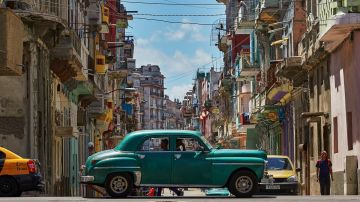Cuba Has a Prime Minister for the First Time in 43 years
Cuba’s President Miguel Diaz-Canel named former tourism minister Manuel Marrero Cruz as prime minister, a role that has not existed on the island for more than 40 years and was last held by Fidel Castro

Photo: Unsplash/@dorographie
Cuba’s President Miguel Diaz-Canel named former tourism minister Manuel Marrero Cruz as prime minister, a role that has not existed on the island for more than 40 years and was last held by Fidel Castro. Marrero served as Cuba’s tourism minister for almost 16 years and was named prime minister for a five-year term, according to Cuba’s state news agency, ACN.
Castro held the post from 1959 to December 1976, when he took the title of president of the State Council, replacing the posts of president and prime minister. Diaz-Canel remains head of state and Raúl Castro, Fidel’s brother, remains the first secretary of the powerful Communist Party. Under the new constitution, the Communist Party is still the only political party allowed in Cuba, and it remains the guiding force for all government policy.
Díaz-Canel alluded to Marrero Cruz’s “honesty, ability to work, and loyalty to the Communist Party and the revolution” during the announcement, BBC reports. Marrero Cruz was named to his former post by Fidel and under his control tourism became one of the country’s largest sources of income. Cuba welcomed 4.3 million tourists this year, more than double the 2 million who arrived the year Marrero Cruz, 56, took on the role, according to the Associated Press.
The role of prime minister “is a mechanism to have a more collective government and not have power concentrated in one person,” Carlos Alzugaray, a former senior Cuban diplomat said, according to NBC News. Marrero Cruz’s appointment was unanimously ratified by the 594 deputies of Cuba’s National Assembly during their annual year-end meeting, the majority is required for the appointment, according to ACN.
The most powerful position in the country remains chief of the Community Party and Raúl will hold that position until 2021, after which Diaz-Canel will take it on. Before Fidel’s death in 2016, Raúl came into power in 2006 and remained president until April 2018. According to Arturo López-Levy, assistant professor at Holy Names University and a former analyst with Cuba’s interior ministry, the reason for the resurgence of the prime minister role in the absence of a “charismatic” revolutionary leader like Fidel. “Without charismatic leadership, it’s important to distribute government roles,” he said to NBC News.
Charisma, however, couldn’t save this nation — one of the last communist governments in the world — from economic turmoil, averaging only about 1 percent annual growth in the past few years. The government reported a 4 percent growth in 2015 – the year after the U.S. normalized relations with Cuba, leading to a travel boom. However, in June of this year, a new ban came into effect introduced by the Trump administration that banned all travel by cruise ships to the island — the most popular way to visit the island for the last twenty years.
One of the major tasks the prime minister will take on is unifying its dual monetary system that is allegedly set for 2020. The concept of two currencies, the peso and the convertible peso (CUC) was developed to help absorb the shock of the collapse of the Soviet Union yet it simultaneously distorted the economy and never revealed the real economic situation of the country. These political changes are being viewed as seeds of change away from Communism. “This is having an eroding role in the pillars of the communist system. The seeds of capitalism are already planted in Cuba everywhere,” López-Levy said.

















